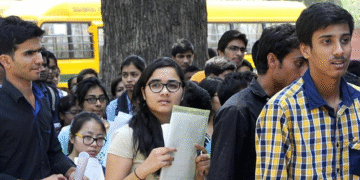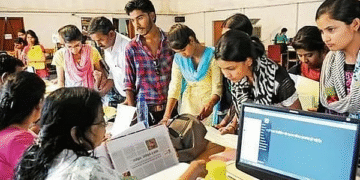Special Correspondent
Pune: Maharashtra is set to experience an exceptionally hot summer this year, with the India Meteorological Department (IMD) predicting frequent heatwaves between March and May. The latest seasonal forecast warns of above-average temperatures across the state, raising concerns about extreme heat and its potential impact.
According to the IMD’s summer outlook released on February 28, most parts of India will witness higher-than-normal maximum temperatures. While some regions in the southern peninsula and the northeast may see near-normal or below-normal temperatures, Maharashtra is expected to endure prolonged and severe heatwave conditions.
The state has already been experiencing unseasonably high temperatures in January and February, setting the stage for a scorching summer ahead. The IMD report indicates that heatwave incidents will be more frequent and intense, significantly affecting both inland and coastal areas.
Between February 25 and 27, Maharashtra recorded temperature deviations ranging from 4 to 7 degrees Celsius above normal, particularly in coastal regions. This early spike in temperatures suggests that residents, farmers, and authorities must prepare for a challenging summer.
Senior IMD meteorologist SD Sanap highlighted the urgency of the situation, stating, “The temperature outlook indicates that Maharashtra is likely to witness above-normal temperatures for most of the summer season. Special attention must be given to the likelihood of more frequent heatwave events this year.”
Despite the forecasted extreme heat, certain parts of Maharashtra, particularly in the south, may experience above-average rainfall in March. These showers, driven by localized weather patterns and thunderstorms, could offer brief relief. However, experts caution that the rainfall might not significantly counteract the overall heatwave impact and may instead increase humidity levels, intensifying discomfort.
Historically, Maharashtra records below-average rainfall in March, but this year’s weather patterns suggest the possibility of scattered showers. While rain might provide temporary relief, the overall summer conditions remain concerning.
The rising temperatures pose serious health risks, including dehydration, heat exhaustion, and heat strokes. Additionally, extended heatwave periods can affect agriculture, water resources, and electricity demand, necessitating proactive measures from the government and local authorities.
To mitigate the impact of extreme heat, public advisories on heatwave preparedness, water conservation strategies, and enhanced healthcare support will be crucial. Citizens are urged to stay hydrated, avoid exposure to direct sunlight during peak hours, and take necessary precautions to prevent heat-related illnesses.
As Maharashtra prepares for an intense summer, both residents and policymakers will need to stay vigilant and take necessary steps to handle the challenges posed by soaring temperatures and frequent heatwaves.



















